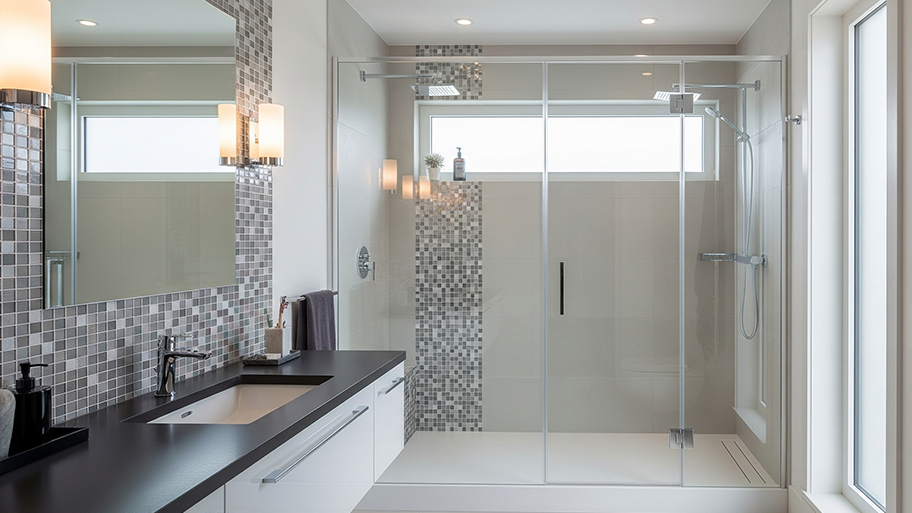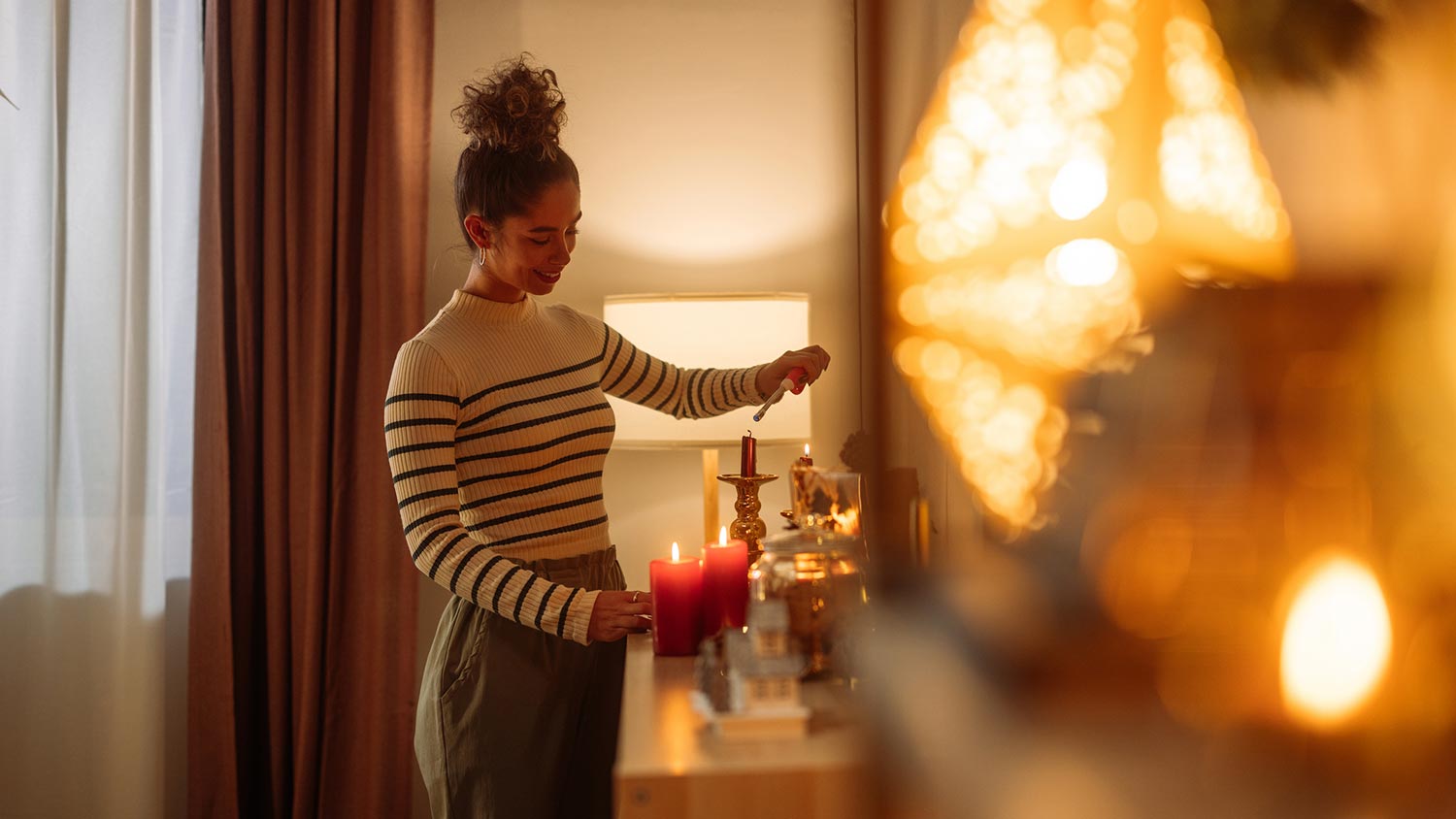
Fire damage restoration costs vary widely based on the extent of the damage. Learn how to assess your home and estimate your total after a fire.
There’s no need to cry over spilled milk (or water)


Wood—whether it comes in the form of hardwood floors, furniture, or detailed accents—instantly elevates a home while adding depth and richness to your aesthetic. Nothing ruins that look more than water damage that can manifest as white spots, bubbling, and peeling surfaces. Fortunately, repairing water-damaged wood veneer is a job suited for even beginner DIY homeowners. Use this guide to walk you through repairing and restoring your wood veneer furniture back to its prime.
Taking care of wood veneer requires routinely cleaning its surface. Don’t beat yourself up if you’ve been lax about the upkeep—most of us are. Before you get started on your DIY project to fix water-damaged wood furniture and surfaces, you’ll need to clean it.
Slightly dampen a cloth—it should be both soft and lint-free—with a wood furniture cleaner. Clean the surface by wiping the cloth in the same direction as the pattern of the wood grain. This will remove dust, dirt, and fingerprints from your wood veneer. Follow up by wiping the surface dry with a clean, dry cloth.

When dealing with water damage, your wood furniture could feature white spots that appear in clusters or isolated areas. It all depends on how water comes in contact with it. Your next step is learning how to remove white water stains from wood veneer. Fortunately for you, it’s pretty easy to reverse this damage if the water hasn’t sunk too deep into the wood.
With a soft cloth and a stain remover—liquid furniture polish or denatured alcohol—gently buff the cloth over the white spots. And yes, we mean gently. If you get carried away, the white spots won’t be the only thing you get rid of as it’s also possible to take off some of the veneer. Once you’ve removed all the white water spots, use a clean cloth to wipe off the stain remover.
When moisture gets trapped beneath a wood finish, it can cause blushing. And no, it’s not as pleasant as a rosy coloring on the cheeks.
Blushing is a light, milky color that appears on wood surfaces. Removing it requires some experimentation if you don’t know what finish you’re working with. First, you must determine if you’re dealing with a shellac or lacquered finish.
With another clean cloth—dampened with denatured alcohol—swipe along the blushing in quick, gentle strokes. If the alcohol starts dissolving the finish and the blushing disappears, you’re working with a shellacked finish. In this case, keep doing what you’re doing until your veneer clears. If the alcohol doesn’t work, your wood veneer finish is lacquer. To remove blushing from lacquered surfaces, replace the denatured alcohol with a blush eliminator that dissolves your lacquered finish and lets the moisture escape.
Let the surface dry for 24 hours.

After you’ve removed any blushing from your wood veneer, you’re likely dealing with one or more areas without any wood finish. To give your wood a noticeable facelift, a smooth surface is non-negotiable. You’ll need protective gear—eyewear and a mask—some time and a little bit of elbow grease to strip and sand your wood.
Stripping your furniture isn’t necessary, especially if you only deal with minor dents and scratches. In that case, you can stick to sanding. However, using a chemical stripper can be a lifesaver and timesaver—and literal wood saver—if you’re working on a large surface or trying to eliminate extensive damage. For example, you might find stripping your wood necessary in the aftermath of water seeping through your floor or if you need to repair a water-damaged veneer table top with extensive damage.
Use a paintbrush to apply a chemical stripper to your wood. Don’t be stingy with it, either. You don’t want clumps of the stripper sitting along the wood, but it should be generously coated. The instructions on the product will tell you how long to let it sit, but a good rule of thumb is to wait around 30 minutes. Use a plastic putty knife to scrape off the old varnish. Unless you want to transform this “how to repair water-damaged wood veneer” into “how to damage wood veneer,” stay away from a metal knife for this DIY project.
Moving with the wood grain, use sandpaper to buff out any imperfections in the wood, focusing on any areas with water damage. For larger areas, use an orbital sander and sandpaper. Use a dry cloth to wipe away the dust before moving on.
It’s not enough to repair water-damaged wood veneer. You need to protect it. Varnish protects your wooden furniture with a durable, shell-like finish. It’s resistant to yellowing and acts like sunscreen against UV rays, protecting your wood from cracking or warping.
Pour the waterproof varnish of your choice into a bucket or container. Use a paintbrush to collect as much varnish as possible. If your DIY project involves fixing water-damaged wood floors, you’ll need a larger stain brush to complete the job quickly.
Starting at one side of the surface, apply the varnish across its entire length in one long stroke, using firm pressure the entire time. Pick up more product with the paintbrush and repeat until you’ve covered the entire surface, slightly overlapping each stroke.
Your wooden furniture isn’t a canvas, so you’ll want to avoid the back-and-forth strokes that are normal in a paint job. After covering the surface in long, smooth strokes, let the varnish dry. Varnish usually requires multiple coats, so follow the directions on the product for information on application and drying time. Prepare yourself—some products recommend you let the varnish dry for at least 24 hours between coats.
The final step in your DIY journey of learning how to repair water-damaged wood veneer requires no work and a little patience. You haven’t fully remedied your wooden veneer until you’ve let the waterproof varnish cure. Curing is when a liquid—your varnish—solidifies by drying or cooling. Before you place any products on your wooden furniture, let it cure for two to three days.
While learning how to repair water-damaged wood veneer is a pretty straightforward DIY, there are a few mistakes you might make that can affect the final results. Mistakes to avoid include:
Sanding or buffing too aggressively
Not allowing enough time for stripper to work or varnish to cure
Not letting the veneer fully dry after removing blushing
Minor water damage to wood veneer is a DIY project suitable for most homeowners. Completing the project yourself will cost about $200. Once you get into more extensive damage—swollen furniture and black spots—it’s time to seek the expert advice and handiwork of a local water damage restoration professional. They can tackle jobs that range from getting rid of mold to repairing water-damaged baseboards. For the best results, hire a water damage restoration pro who specializes in the type of veneer damage you have.
On average, water damage repair costs between $3.75 and $7 per square foot. The cost to repair water damage depends on a few things—the extent of the damage, the type of water, the class of water damage, and the root cause. You’ll need a professional who specializes in water damage to evaluate the damage and offer a price quote.
From average costs to expert advice, get all the answers you need to get your job done.

Fire damage restoration costs vary widely based on the extent of the damage. Learn how to assess your home and estimate your total after a fire.

Fire hydrant costs might not be an expense you think about day-to-day, but they’re important to consider for the safety of your home.

Water damage restoration costs depend on the severity of the problem, the type of water, and the length of time the damage has been occurring.

Knowing how to tell the difference between termites and wood rot is essential for hiring the right pro and treating the problem before it’s too late.

The damage after a fire can be widespread and challenging to deal with. Here are all some common causes of fire damage and how to address each of them.

Most homeowners don’t know how to deal with water damage. Use this guide to take the proper steps to minimize damage and keep your family and home safe.